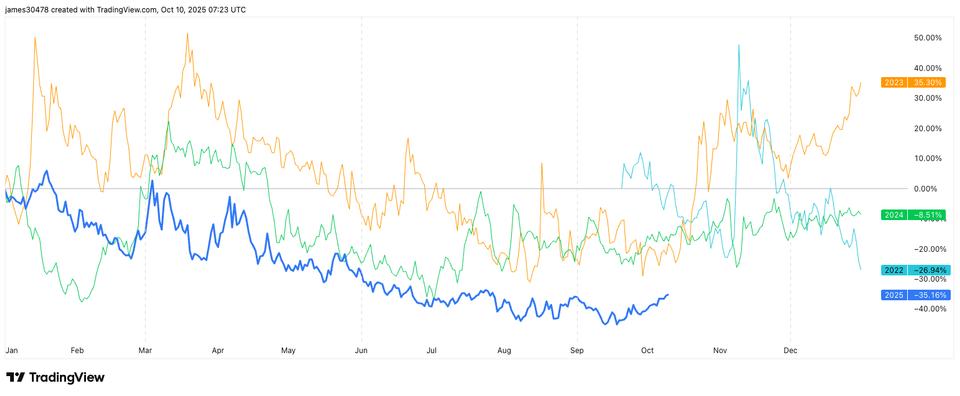Bitcoin The Implied Volatility (IV) gauge hit a 2.5-month high, in line with seasonal trends.
Volmex’s Bitcoin Implied Volatility Index, BVIV, which represents the expected four-week annualized price turbulence, exceeded 42%, the highest since late August, according to data source TradingView.
IV measures market expectations regarding future price movements based on option prices. A higher IV suggests that traders expect larger price movements ahead.
BVIV rose earlier this month alongside a rise in the price of BTC and has continued to climb despite the latest record pullback from over $126,000 to around $120,000.
Bullish seasonality
Historical BVIV data shows that the index tends to increase at this time of year. The years 2023 and 2024 saw a significant increase in volatility in October, highlighting a recurring seasonal trend.
CoinDesk Research notes that the 2025 volatility pattern closely mirrors that of 2023, while it was only in the second half of October that IV began its next major leg up, rising from an annualized rate of 40% to over 60%.
It’s the same thing for the spot price. Historically, the second half of October offers higher returns than the first.
According to Coinglass data, bitcoin averaged gains of around 6% each week over the next two weeks, which are among the most bullish periods of the year. November is typically the best performing month, historically delivering returns above 45% on average.
The IV is expected to increase from this current range in the coming weeks.
Broader inverse relationship
Since the end of last year, BTC’s IV has tended to increase most often during price declines in a classic dynamic like that of Wall Street. The inverse relationship is clear from the persistent downward trend in IVs since late last year and the broader upward trend in prices.
As bitcoin becomes an asset, the law of diminishing returns suggests that price gains will gradually decrease and volatility will also decrease over time. Zooming out, the BVIV model shows a clear long-term downward trend in implied volatility since the measure was first introduced.




